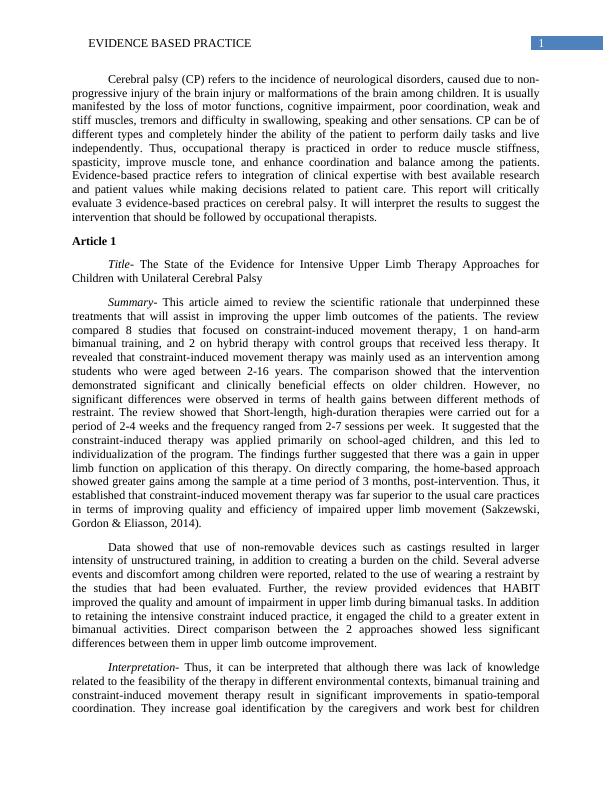Ask a question from expert
OCTR 260 - Occupational Therapy Practice for the Assistant
5 Pages1837 Words69 Views
Occupational Therapy Practice for the Assistant (OCTR 260)
Added on 2020-04-21
OCTR 260 - Occupational Therapy Practice for the Assistant
Occupational Therapy Practice for the Assistant (OCTR 260)
Added on 2020-04-21
BookmarkShareRelated Documents
End of preview
Want to access all the pages? Upload your documents or become a member.
Sensory Issues - Cerebral Palsy
|15
|3926
|18
Child Management Plan for Arthrogryposis Congenital Multiplex and Cerebral Palsy
|7
|2145
|244
Poster Proposal | PICO Format
|7
|993
|18
Early Mobilization of Critically Ill Patient in Intensive Care Unit Research Question 2022
|15
|3062
|23

